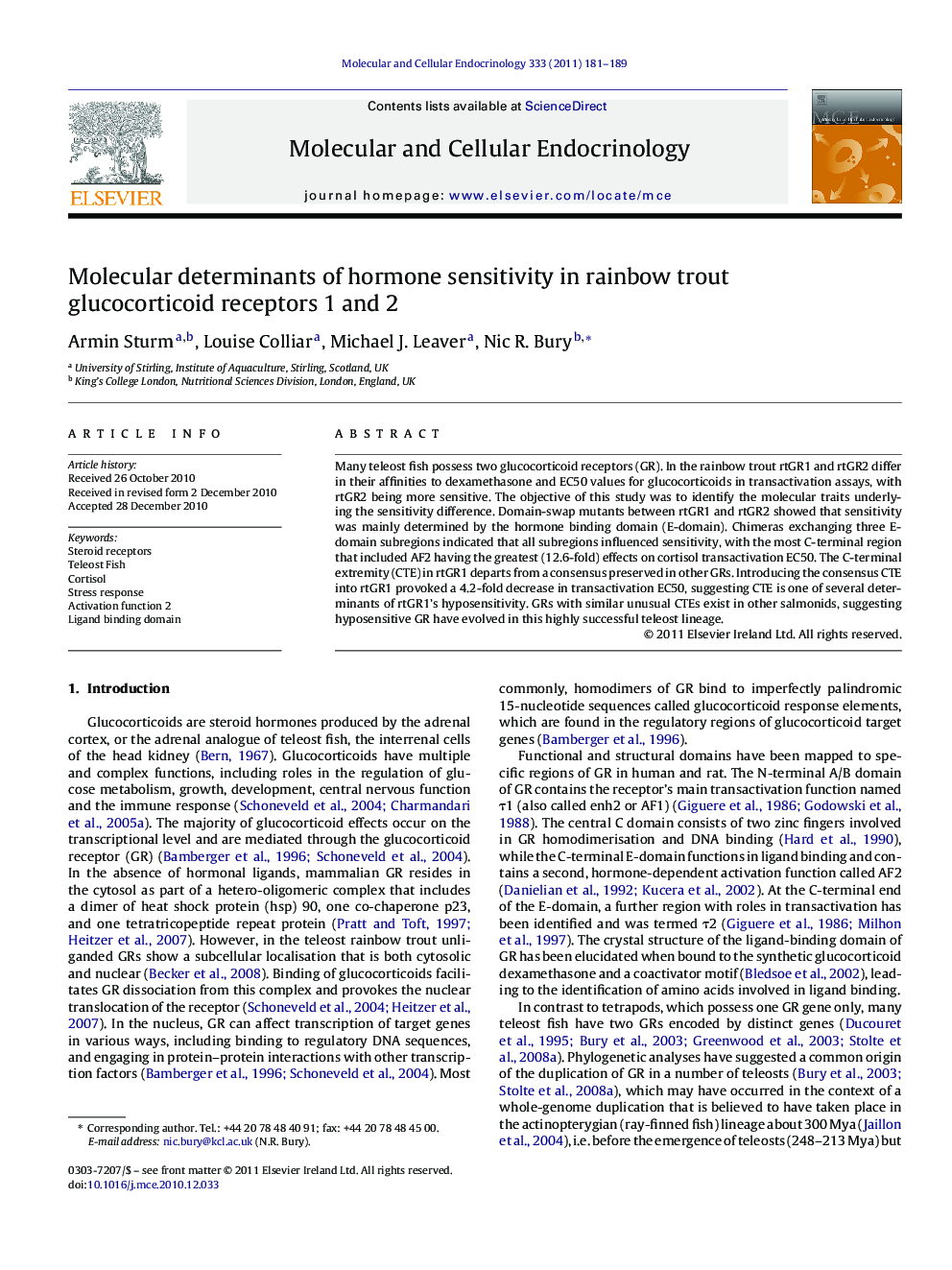| Article ID | Journal | Published Year | Pages | File Type |
|---|---|---|---|---|
| 2196721 | Molecular and Cellular Endocrinology | 2011 | 9 Pages |
Many teleost fish possess two glucocorticoid receptors (GR). In the rainbow trout rtGR1 and rtGR2 differ in their affinities to dexamethasone and EC50 values for glucocorticoids in transactivation assays, with rtGR2 being more sensitive. The objective of this study was to identify the molecular traits underlying the sensitivity difference. Domain-swap mutants between rtGR1 and rtGR2 showed that sensitivity was mainly determined by the hormone binding domain (E-domain). Chimeras exchanging three E-domain subregions indicated that all subregions influenced sensitivity, with the most C-terminal region that included AF2 having the greatest (12.6-fold) effects on cortisol transactivation EC50. The C-terminal extremity (CTE) in rtGR1 departs from a consensus preserved in other GRs. Introducing the consensus CTE into rtGR1 provoked a 4.2-fold decrease in transactivation EC50, suggesting CTE is one of several determinants of rtGR1's hyposensitivity. GRs with similar unusual CTEs exist in other salmonids, suggesting hyposensitive GR have evolved in this highly successful teleost lineage.
